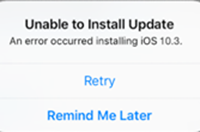Android Data Recovery
Are you new to the field of software development and still learning the ropes of what it takes to bring your code to life? Without proper file system storage capabilities, the field of programming can be overwhelming to maneuver.
One of the terms you are probably less familiar with is a Docker. Docker is a technology that allows you to consolidate and store your code and its data into an image. This image can then be used to create an example of your application - a container.
Therefore, a docker registry is a storage and distribution system for Docker images that are named. You can see how a docker registry would be highly beneficial to a programmer working with large amounts of code from various sources to create a software.
In this article, we will be going into detail on the functions and capabilities of a docker registry manager and how a developer can benefit from one. We’ll also go over a few of the best docker registry management tools we recommend, such as JFrog.
What Can a Docker Registry Do?
A Docker registry is organized into Docker repositories. A docker repository is a home to all versions of a specific image, past and present. Remember that an image is what carries the code. A docker registry allows Docker users to easily retrieve images locally or import new images to the registry.
Although there are several different docker registries available, most share the same fundamental capabilities. Common operations of a docker registry include:
- Searching for images in a public repository
-Extract an existing image from a public repository
-Push a local image from your registry
-Create a new organization from a browser
-Make a new repository
-Create an automated build from a browser
Dockers pull images from repositories, which are either public or private. Public repositories are accessible by anyone running Docker. You can recognize a public repository because its image names include the organization and username. Private repositories, on the other hand, include images verified for security and best practices and do not require an organization or username.
What Docker Registries Are Available?
If you are new to docker registries, you are probably not very familiar with the various tools and programs available to you aside from DockerHub. DockerHub is a public registry that is the default for Docker engine interactions. It is the official hosted registry system by Docker Inc.
However, it is possible to run other registries, both private, public, and commercial. This flexibility allows developers to pick a program that best suits their needs and preferences.
Public Docker Registries
There are several options for public docker registries out there. These are usually paid and available online for anyone in the public to use. Such registries include:
-Amazon Elastic Container Registry (ECR): Authenticates by integrating with AWS Identity and Access Management (IAM) services. Some cons include that it only offers access to private repositories and does not feature automated image building.
-Google Container Registry (GCR) authentication: Based on Google’s Cloud Storage service permissions, GCR only gives access to private repositories. It has the ability to offer automated image builds by integrating with Google Cloud Source Repositories, GitHub, and Bitbucket.
-Azure Container Registry (ACR): Supports registries that are both public and private and has the ability to authenticate with Active Directory. On the downside, it only supports only private repositories and does not offer automated image building.
-CoreOS Quay: This public docker registry offers both private (paid) and public (free) repositories. It also features automatic security scanning and automated image builds via integration with GitLab, GitHub, and Bitbucket, and supports OAuth and LDAP authentication.
Private Docker Registries
Private docker registries typically have more capabilities and are highly recommended for the advanced programmer. Here are just a few of the additional features private docker registries have to offer:
-Share images within an isolated network instead of sending images over the Internet
-Creating faster CI/CD pipelines by pulling and pushing images from the internal network
-Allows for faster send-outs to centralized environments
-Sending out a new image across a large batch of hardware
-Strong control over where images are being stored
Running a private docker registry requires a strong skill set in order to support maintenance. You must be able to ensure that there is availability. A developer will also have to stay on top of log processing, monitoring, and security. Finally, the programmer must have an extensive background in overall networks and how they work.
Not sure where to start in your private docker registry research? We have you covered. Some popular private docker registries include:
-JFrog
-GitLab
-Harbor
-Sonatype Nexus
-Portus
Programming and the ability to code is an important job that is integral to today’s high-tech society. With the help of tools such as docker registries, the process has become simpler than ever.




















